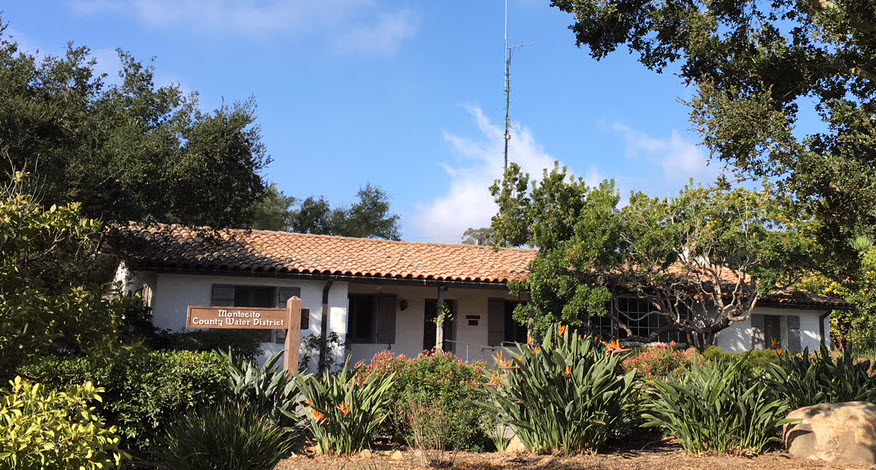A Floating Sewer Line in the Ocean?
Dubious Proposals at Montecito Sanitary and Water Districts

The reaction to Heal the Ocean’s April 19, 2022, letter to the editor of the Montecito Journal regarding Bob Hazard’s piece “Should the Montecito Water and Sanitary Districts Consolidate?” was swift: At a joint meeting of the Montecito Water and Sanitary districts on Wednesday, April 27, 2022, Mr. Hazard said my piece was an “old” argument, but also that the districts needed to step up their public relations work, that Heal the Ocean’s community outreach could impact their reputations and/or whatever it is they are trying to accomplish.
To get the argument into present-day conversation, Heal the Ocean now reports to the public that during the joint meeting on that Wednesday, the boards of both districts received preliminary results of a $400,000 study by Carollo outlining options for increasing water supply to Montecito. Among those options being studied – and this is current:
• Building of infrastructure in Montecito for Non-Potable Reuse (NPR) in Montecito: purple pipes for irrigation water;
• Indirect Potable Reuse (IPR) in Carpinteria: sending Montecito wastewater to Carpinteria for processing and injection into the Carpinteria groundwater basin for settling/purification, then piping it back up to Montecito for customer use;
• Direct Potable Reuse (DPR) in Montecito: purifying wastewater at the Montecito Sanitary facility to drinking water standards, and piping it into the Montecito Water District water supply;
• Direct Potable Reuse (DPR) in Santa Barbara: Montecito Sanitary’s wastewater being sent to the City of Santa Barbara’s El Estero treatment plant, and returning as a water supply for Montecito.
Into this discussion — and I’m not making this up — is the idea for getting Montecito San’s wastewater to Carpinteria via a floating wastewater line in the ocean from Montecito to Carpinteria. Yes, this was brought up in the meeting.
A floating wastewater line in the ocean is patently absurd, and even though the idea is not being officially studied, the joint boards have considered it seriously. We suggest that instead of spending any money investigating this idea, somebody from the Sanitary District Board could pick up the phone and call the California Coastal Commission and get a fast answer – for free: NO.
Heal the Ocean will say again that direct potable use (DPR) is still years away, the State of California still has not developed standards, and during the continued wait, the wastewater continues to be wasted, when it could be watering the grass at the cemetery — now. Again, we say using non-potable water for irrigation saves potable water, which is a reverse way of producing potable water.
As for piping Sanitary District wastewater to Carpinteria for treatment, injecting it into Carpinteria groundwater basin for Indirect Potable Reuse (IPR) purposes, then shipping it back to Montecito, Heal the Ocean reiterates that this can never happen. Because Cal Trans will never allow pipes going and coming over such distances and Carp’s Sanitary District Manager Craig Murray has already politely explained to the consultants doing this incredible study that Carpinteria San has to reserve its capacity for its own ratepayers. And, as Heal the Ocean has pointed out, pumps needed to pipe wastewater for such a long, and non-gravity, distance is a huge energy issue that will never be permitted. A simple phone call to somebody would get this answer for free, yet the so-called “Water Security Team” behind the operations of both district boards praise the $400,000 study that is investigating this.
As for another study investigating the consolidation of Montecito Water and Montecito Sanitary (MWD/MSD) into one Community Service District, Charles Hamilton, the intelligent director of the Carpinteria Valley Water District, who has been working with the Carpinteria Sanitary District to build their mutually designed indirect potable reuse plant, recently published a far nicer response to this idea than the one Heal the Ocean put into print. Basically, Mr. Hamilton writes that consolidation is not cost effective. Heal the Ocean has stated that sanitary districts run wastewater operations, water districts (are supposed to) grapple with water issues; a single board of individuals who are not versed in the unique requirements of each one is futile.
We also continue to maintain that successful Community Service Districts started out that way (including Santa Barbara’s wastewater/water resources division), they were not formed by hostile takeover.
This is current information, and in deference to Mr. Hazard’s observation that Heal the Ocean should quit moaning around the failure of MWD/MSD to access free money through Prop. 1 for planning studies to build recycled water facilities, we’ll agree with Mr. Hazard and quit crying over spilt milk. We will stay in the present — which in our opinion, is no better than the past — and leave it there.
In closing, it should be mentioned that during the joint board meeting of April 27, 2022, suggestions were made by both Mr. Hazard and board members that what is really needed is better public relations with both Heal the Ocean and the public. The statement was made that printed articles in the Independent are “typical Independent” as are articles by Melinda Burns (“typical Melinda Burns”), when Melinda is one of the most even-handed investigative journalists in Santa Barbara County.
Hillary Hauser is president and executive director of the nonprofit Heal the Ocean.



